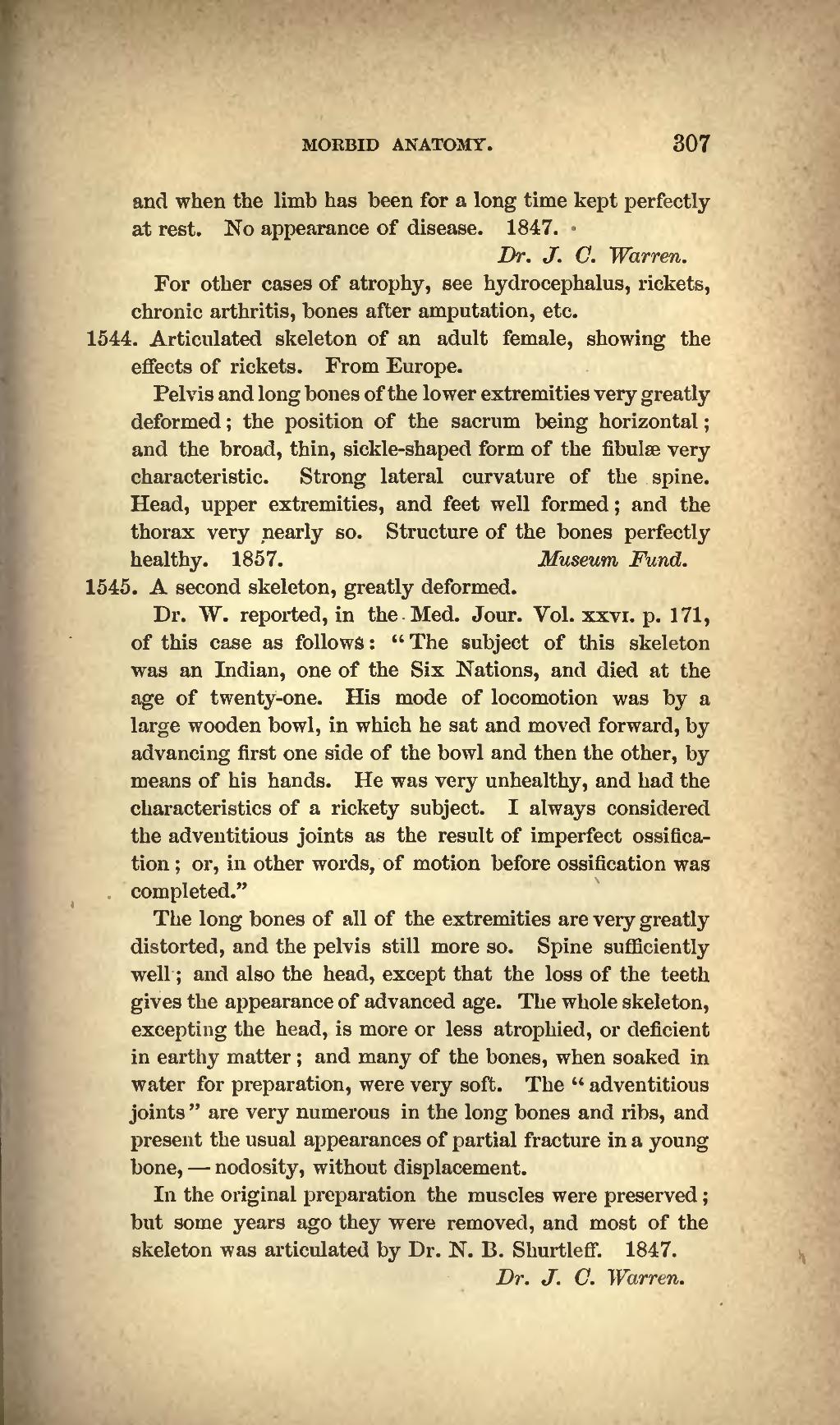and when the limb has been for a long time kept perfectly at rest. No appearance of disease. 1847.
Dr. J. C. Warren.
For other cases of atrophy, see hydrocephalus, rickets, chronic arthritis, bones after amputation, etc.
1544. Articulated skeleton of an adult female, showing the effects of rickets. From Europe.
Pelvis and long bones of the lower extremities very greatly deformed ; the position of the sacrum being horizontal ; and the broad, thin, sickle-shaped form of the fibulae very characteristic. Strong lateral curvature of the spine. Head, upper extremities, and feet well formed ; and the thorax very nearly so. Structure of the bones perfectly healthy. 1857. Museum Fund.
1545. A second skeleton, greatly deformed.
Dr. W. reported, in the Med. Jour. Vol. xxvi. p. 171, of this case as follows : " The subject of this skeleton was an Indian, one of the Six Nations, and died at the age of twenty-one. His mode of locomotion was by a large wooden bowl, in which he sat and moved forward, by advancing first one side of the bowl and then the other, by means of his hands. He was very unhealthy, and had the characteristics of a rickety subject. I always considered the adventitious joints as the result of imperfect ossifica- tion ; or, in other words, of motion before ossification was completed."
The long bones of all of the extremities are very greatly distorted, and the pelvis still more so. Spine sufficiently well ; and also the head, except that the loss of the teeth gives the appearance of advanced age. The whole skeleton, excepting the head, is more or less atrophied, or deficient in earthy matter ; and many of the bones, when soaked in water for preparation, were very soft. The " adventitious joints " are very numerous in the long bones and ribs, and present the usual appearances of partial fracture in a young bone, nodosity, without displacement.
In the original preparation the muscles were preserved ; but some years ago they were removed, and most of the skeleton was articulated by Dr. N. B. Shurtleff. 1847.
Dr. J. C. Warren.
�� �
